- | 8:00 am
The trick to avoiding empty innovation? Finding the right problem to solve
From Airbnb to Amyris, Sola Biu has built a career around creating more inclusive design communities.
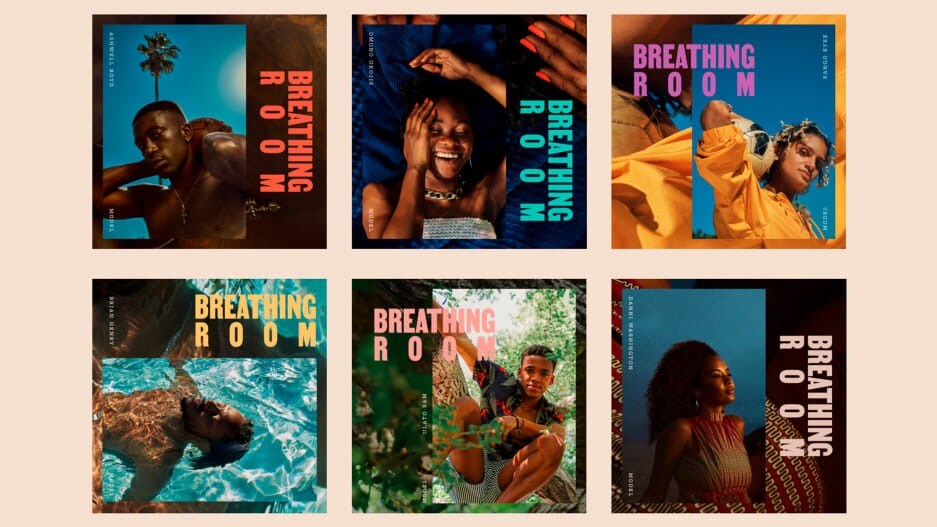
Sola Biu is a hybrid creative director and strategist who has spent her career finding unconventional, equitable solutions to hard problems. She is currently a VP of global brand marketing and engagement at Amyris, a synthetic biotechnology company focused on clean health and beauty. Prior to Amyris, Biu served as the head of Airbnb’s global design brand marketing team and founded a social justice creative coalition called Breathing Room. Here, we talk with Biu about her evolving definition of design, how cross-discipline collaboration is key to great work, and the importance of building inclusive creative communities.
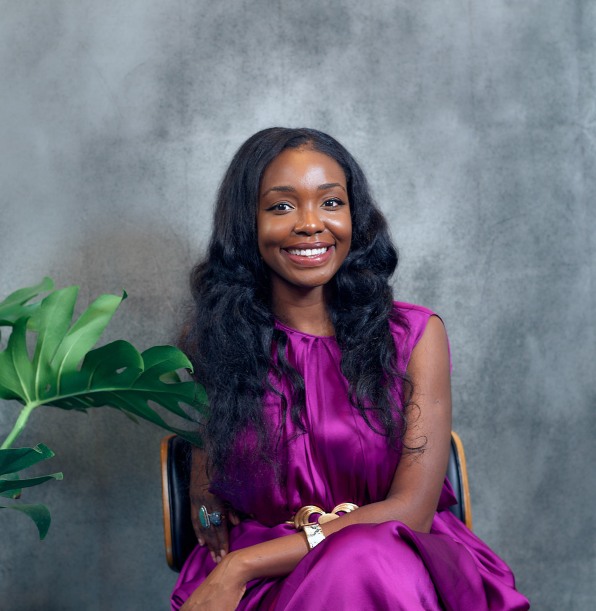
Fast Company: When did you first realize you had an interest in design?
Sola Biu: When I first started designing, I didn’t recognize that it was design. This aligns with my view on how a lot of people are designers without the formal label. I was working for a traditional company that viewed innovation as a threat instead of an asset. Anytime I tried to change anything in that organizational culture, it was seen as challenging the status quo. I channeled my extra energy and creativity into a side project designing jewelry, which evolved into a business. I love jewelry design because it’s a mix of art and design; beauty must meet function to succeed. While doing that in Washington, D.C., I started to see myself as a designer and learn more about design. When I moved to San Francisco later in my career, I began to explore the world of digital product design. That served as an introduction into my current realm—a world where analog and digital design converge with marketing.
FC: What are your favorite types of design mediums for storytelling?
SB: I design unconventional experiences, ranging from analog installations to co-developing new tools for creatives. They’ve also included reimagining the employee journey within a scaling organization to thinking through ways to improve an individual’s quality of life from a human rights lens. My through line: I’m committed to the quality of those experiences and the equity people have within them.
The medium can be so many different things. It can be a physical space, an educational resource, or a workshop. I’ve used a shipping port to challenge misconceptions about bias in journalism, leveraged joyful portraiture to explain police violence, and worked with a crossword puzzle maker to unpack how humans navigate chaos. I enjoy pairing mediums, messages, and people you wouldn’t expect to effectively engage an audience.
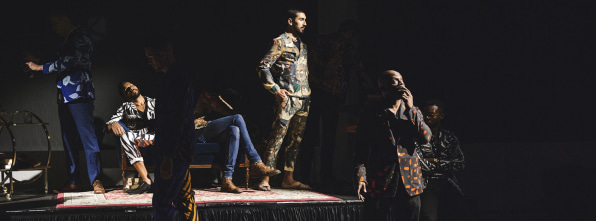
FC: How do you approach design for global communities?
SB: It starts with taking the time to understand my audience. My community-building work at Airbnb helped me recognize the breadth of design subcultures all over the world (San Francisco versus New York, or Beijing versus London, every place has its own flavor). I find it important to build community within each city in order to understand, from creatives and designers on the ground, local challenges and opportunities. I actively try to avoid putting my own uninformed assumptions into the solutions I create. It requires extensive research. This includes talking to people on the ground, looking at local news outlets, uncovering the history, and exploring the rhythm of a city to understand the local insights, etc. It also requires giving credit back to the locals that guided and cocreated with me. This helps me create projects that feel authentic, additive, and are celebrated at the local level.
FC: Your design trajectory seems to have equipped you with skills for so many different industries. What do you take with you to all of these jobs?
SB: I’ve worked in travel, design, social media, science, and finance. Next, I’ll be moving into sustainable beauty and wellness. The space can shift, but my foundational approach to solving problems remains consistent (with some adaptations to account for the new environment).
It’s easy to innovate for innovation’s sake, which happens a lot in tech. I enjoy solving new problems that matter at the individual and societal level. I apply design principles to how I approach marketing and storytelling to ensure I’m meeting the needs of my target audience. Sometimes, the result is an unexpected journey. For example, when I got to Airbnb, I thought it was going to be about travel. Specifically discovering and uncovering new cultures. Plot twist: When I arrived, there was a discrimination crisis. It became a different challenge to figure out a thoughtful, innovative way we could start to unpack that internally, help the company learn from it, and then bring our community along with us to address it in an effective way.
FC: What inspired you to launch the creative coalition, Breathing Room? What is its mission?
SB: George Floyd’s murder was the catalyst. People respond to trauma in different ways; I wanted to take action. I had so many talented people reaching out and saying, If there’s anything I can do, let me know. I took them up on that offer.
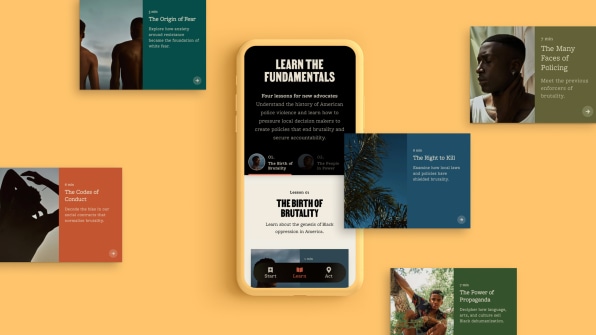
At the time, there was information overload about police brutality, but no clear guidance regarding what we could do on an individual level. I wanted one well-designed mobile-first resource that was simple enough to give anyone the context they needed to learn about the problem and then take action. That was the inception of Breathing Room, a pop-up creative coalition that was focused on designing space for Black people to live without limits through art, design, and advocacy. Through the coalition’s platform, our volunteer team collaboratively developed and released The Necessary Trouble Toolkit as a way to address that educational gap.
It was one of the hardest projects that I’ve worked on. It required designers, researchers, animators, writers, learning coaches, activists, policy experts, lawyers, engineers, etc.
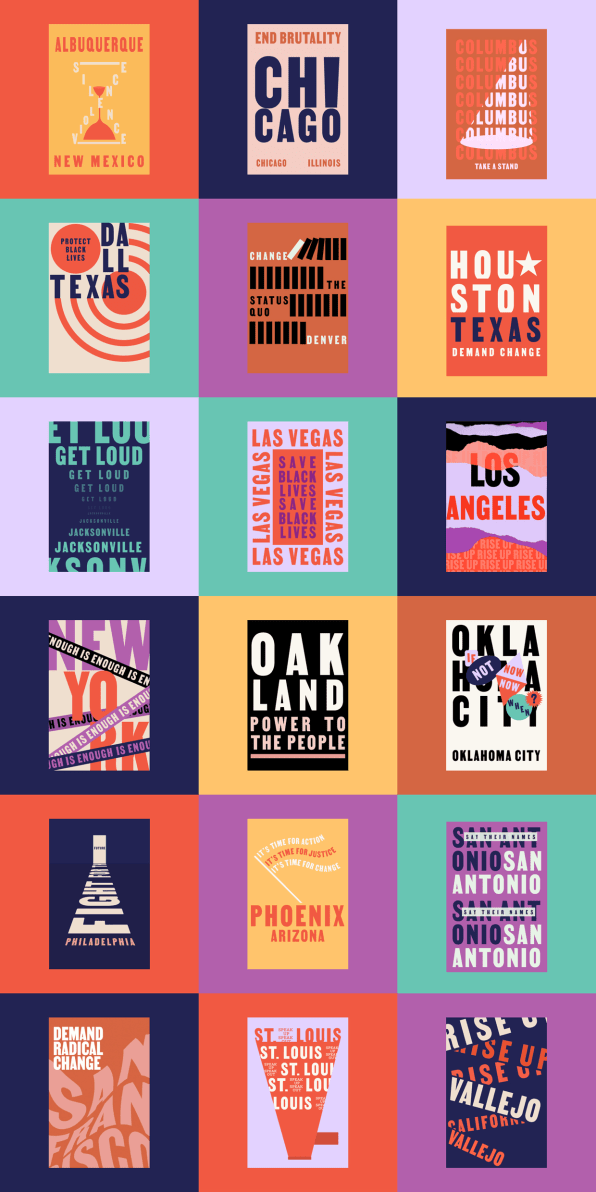
We initially thought we were doing a six-week sprint, and it turned into a year-long commitment. This was due to the complexity of the subject matter and three distinct stakeholders we were serving. The first was the Black community that were exhausted from self-advocacy, next we had allies who wanted to take action but weren’t sure how to offer value, and finally activists who needed support educating the masses. We needed one solution for everyone.
FC: What are some initiatives brands can embrace to build a more inclusive design industry? How can we collectively uplift and support underrepresented designers?
SB: We have to start by taking a hard look at how underrepresented designers are currently treated within the design industry. The answer starts there.
The industry tends to prematurely celebrate when it has invited underrepresented creatives into an exclusive space. However, it frequently falls short at the next logical step: explaining the coded language and unspoken expectations that exist in this sphere to the newcomers. There isn’t enough time or resources invested to ensure that our experiences have equity at different touch points. Integrating people into a new environment isn’t effective if you don’t follow through on this. As a result, underrepresented designers hit a wall very quickly, and rarely ascend into senior leadership positions at the rate of our peers.
When we do get there, we usually feel the tremendous weight of everyone’s expectations (including our own communities). If you elevate people and invest throughout their key touchpoints (example: skills-development milestones, promotion cycles, fundraising needs, etc.), you will see a major shift toward a more inclusive industry. Instead, people cycle in and cycle out completely disillusioned. That is an opportunity for a lot of organizations and institutions to explore and address.
FC: What are some of the projects you’re most proud of?
SB: Playing a pivotal role in defining, shaping, and nurturing the original design culture at Airbnb. I saw the business and community opportunity and designed a team around it. It was a gift to start when the organization was small and help drive its transformation into a mature company with design as a key strategic differentiator during its initial public offering. Most of our tech peer brands reached out over the years for guidance on how to achieve this within their organizations. My guiding philosophy centered around authentically extending the vibrant internal creative culture externally within our community building work. It’s pretty straightforward in theory, but most companies can’t execute effectively on this strategy for a variety of reasons.
I also enjoyed creating the Airbnb Design Talks series. The theory was that many design talks follow a very familiar playbook where the creative professional shows you a presentation about their work. It’s all fascinating, but quite familiar. Our provocation: What if we immersively put you inside their work so that you can experience it, and then the conversation can become a more intimate exploration into their motivations and challenges? We did it with fashion designers, tattoo artists, video game creators, opera singers, etc. We also went with a hostage negotiator in a series focused on how to design for chaos.
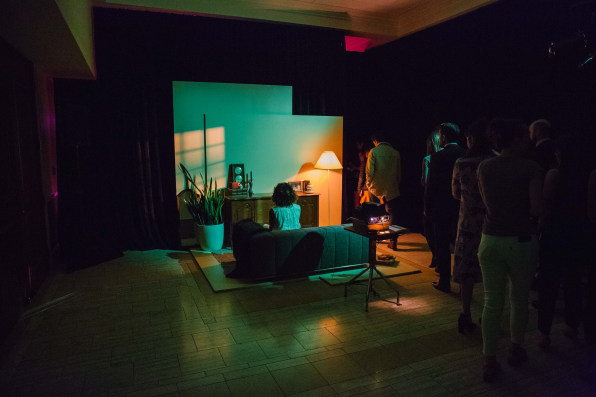
For example, that experience began with the audience hearing a real 911 crisis call in complete darkness. Why? When he enters a hostage negotiation, that’s where the process begins for him. He typically doesn’t have context on why it’s happening like you see on TV—it’s his job to hear the initial call and then get on the phone with the accused, understand the problem, and find a compromise. His definition of chaos was the emotional hurricane that exists within the people that resort to taking hostages.
I enjoyed the Design Talk series because it was a way to give emerging creators a platform and explore different perspectives in design that can inform our work in unexpected ways. Most of those creators have gone on to become accoladed and respected in their industries now, which is always exciting to see.
FC: What’s the most important lesson you have learned throughout your career?
SB: The process is just as important as the outcome. The best and most valuable work I’ve done happened when people were engaged, pushed, and their potential was unleashed. I like to understand what drives people, and when I find projects at the intersection of business needs and their purpose, make that convergence happen.
I value the quality of the experience people have when they are building something. Sometimes the business world deprioritizes this because it wants a specific outcome so much (not realizing that investing in people would get them to that destination faster). Ultimately, the output will become less relevant over time as new innovations take up mindshare and create a new craft standard. The experience people have building something together is typically what stays with them the most.
FC: Do you have any words of wisdom for women and BIPOC creatives aspiring to have a career in design?
SB: You are probably already a designer and you need to realize and own that. Sometimes the label is just a mental barrier. One of the things that I noticed while working at Airbnb is that half of the design team of 400+ creatives were second-career designers. They came from different backgrounds (insurance, therapy, education, etc.), and they eventually transitioned into design. You can do it early or later in life. When you think about the whole journey, it can be intimidating. Take a small step toward your goal. It will organically lead to the next step. You don’t need to have the entire picture mapped out. Don’t overthink it. That’s my advice.








































